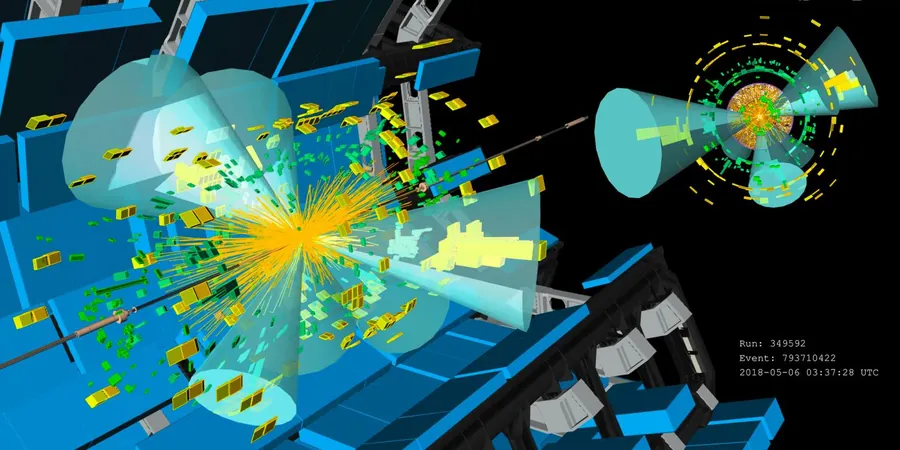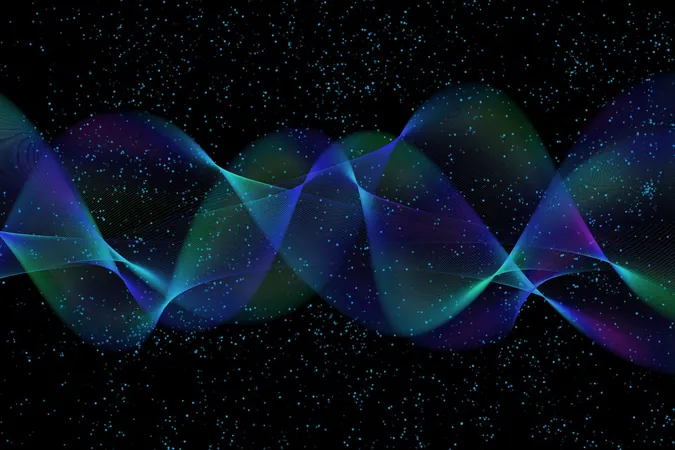
Revolution in Particle Physics: ATLAS Team Aims to Unravel the Mystery of Tri-Higgs Boson Production!
2024-11-08
Author: Rajesh
The quest to understand the fundamental components of our Universe is accelerating, as the ATLAS Collaboration dives into the thrilling investigation of tri-Higgs boson production—an endeavor that could reshape our understanding of particle physics. The Higgs field, an elusive cosmic fabric that stretches across the expanse of the Universe, bestows mass upon fundamental particles. The groundbreaking discovery of the Higgs boson cemented its existence, prompting scientists to delve deeper into the intricacies of its properties—particularly its potential energy landscape, which has major implications for the Universe's long-term stability.
While prior research focused on pairs of Higgs bosons (di-Higgs production), the exploration of three Higgs bosons (tri-Higgs production) opens novel avenues in understanding the Higgs "self-coupling." This interaction is key to studying the properties of four Higgs bosons concurrently, allowing scientists to explore complex theories that go beyond the Standard Model of particle physics. Some of these theories suggest that tri-Higgs production could occur at higher frequencies, perhaps due to the decay of new, heavier bosons.
During the recent Higgs2024 conference, the ATLAS Collaboration made headlines by presenting the first search for tri-Higgs production at the Large Hadron Collider (LHC). This process is notably rare—over 60,000 times less common than the generation of a single Higgs boson. In the hunt for these elusive particles, physicists can't detect the Higgs boson directly; instead, they look for its decay products, most frequently pairs of bottom quarks. Each bottom quark decays into a cascade of particles detectable as a "b-jet."
In their search, researchers scrutinized collision events that produced six b-jets—an exceptionally challenging signal to identify. With 15 different configurations to assign six b-jets to three Higgs bosons and numerous competing processes capable of mimicking this signature, clarity is crucial. ATLAS physicists ingeniously paired the b-jets and worked to reconstruct their combined mass to align closely with that of the Higgs boson (125 GeV). This strategic pairing provided insights into the properties of the individual Higgs bosons as well as the total collision event. Implementing advanced machine learning algorithms, the ATLAS team effectively differentiated authentic signal events from background noise, sharpening their analytical prowess.
While the data does not yet provide evidence of tri-Higgs production, it does establish vital upper limits on the sensitivity of the ATLAS experiment concerning this phenomenon. Researchers directly probed two types of Higgs self-coupling for any deviations from Standard Model predictions, producing the first-ever constraints on the quartic Higgs self-coupling (λ4).
The mission, however, is far from finished. These initial findings are integral stepping stones towards future investigations of rare multi-Higgs production processes. With the High-Luminosity LHC soon expected to generate over 20 times the current quantity of data, and with continuously improving analysis techniques, the ATLAS team is poised to achieve a more profound understanding of Higgs self-coupling dynamics and probe deeper into Beyond the Standard Model theories through tri-Higgs production research.
As we look forward, the implications of these discoveries are enormous. Uncovering the secrets behind the Higgs boson could unlock answers to age-old questions about the origins and makeup of our Universe, propelling us into a new era of particle physics exploration. Stay tuned for more updates from the forefront of scientific discovery!




 Brasil (PT)
Brasil (PT)
 Canada (EN)
Canada (EN)
 Chile (ES)
Chile (ES)
 España (ES)
España (ES)
 France (FR)
France (FR)
 Hong Kong (EN)
Hong Kong (EN)
 Italia (IT)
Italia (IT)
 日本 (JA)
日本 (JA)
 Magyarország (HU)
Magyarország (HU)
 Norge (NO)
Norge (NO)
 Polska (PL)
Polska (PL)
 Schweiz (DE)
Schweiz (DE)
 Singapore (EN)
Singapore (EN)
 Sverige (SV)
Sverige (SV)
 Suomi (FI)
Suomi (FI)
 Türkiye (TR)
Türkiye (TR)